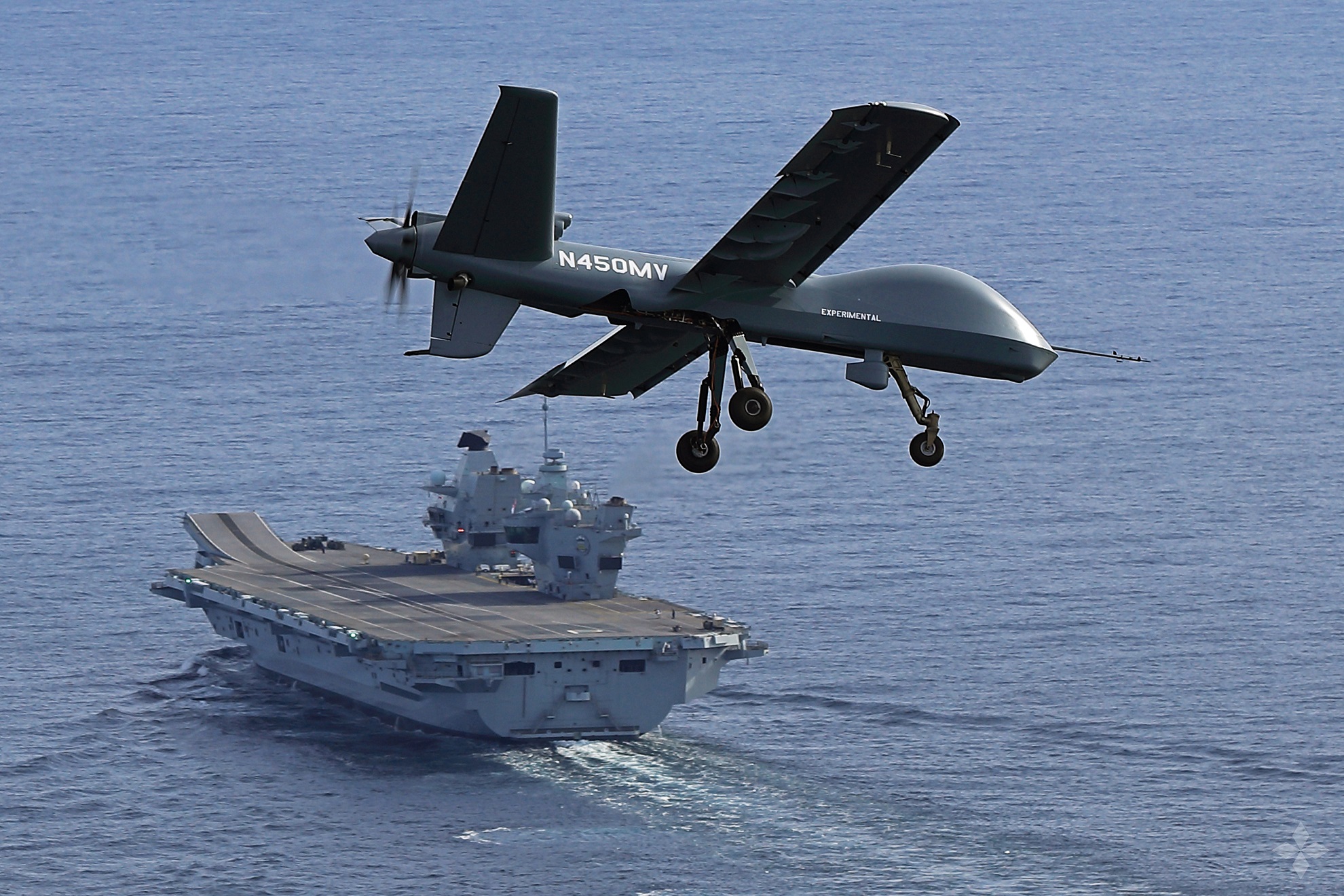UK launches VANQUISH: naval drone to support its F-35B fleet
The project seeks attritable drones capable of operating from carriers without catapults.
The Royal Navy has issued a Request for Information (RFI) to industry for the development of a fixed-wing, short take-off and landing unmanned aerial system (FW STOL ACP) intended to operate from the Queen Elizabeth-class aircraft carriers and to complement the F-35B Lightning II in Carrier Strike Group missions. The project, named VANQUISH, represents a decisive step in transforming British naval aviation toward a hybrid model of manned and unmanned assets by 2040.
The requirement, published by the UK Ministry of Defence (MOD), calls for an at-sea technical demonstration starting in April 2026, with an execution period of up to 18 months and an estimated budget of £12 million. The objective is to validate a Tier 2 “attritable” Autonomous Collaborative Platform (ACP) demonstrator, with turbojet propulsion, high subsonic speed, and the ability to operate from a carrier without catapults or arrestor wires. The system must provide significant payload capacity and operational endurance, with a progressive development roadmap enabling it to undertake a wide range of missions in the future, including ISR, strike, aerial refueling, and support to Carrier Strike operations.

According to the RFI, the demonstrator must align with the principles of the Maritime Aviation Transformation Strategy (MATX), the roadmap through which the Royal Navy intends to transform its Fleet Air Arm into a force that is “manned where necessary and unmanned where possible.” The strategic document envisions a gradual transition from the current manned-platform-centric model toward a digitally interconnected “system-of-systems,” in which autonomous nodes multiply the mass and operational persistence of embarked airpower. Early integration of unmanned capabilities is considered as disruptive as the introduction of the helicopter or the jet engine in its time.
The UK bets on a hybrid and collaborative force
The VANQUISH project is part of a broader MOD effort to equip its combat air forces with affordable, scalable, and rapidly deployable collaborative platforms. The Royal Air Force is already progressing through the second phase of its ACP program, following the introduction of the StormShroud Mk1, designed to protect F-35B and Typhoon aircraft via electronic warfare. Meanwhile, the British Army seeks to integrate highly autonomous—but potentially “disposable”—UAS with its AH-64 Apache attack helicopters. In the naval domain, the Royal Navy has conducted a series of key demonstrations in recent years, including the take-off and landing of the Mojave UAS from HMS Prince of Wales in 2023, the operation of a transport drone from W Autonomous Systems from the same platform, and the integration of Banshee Jet 80+ aerial targets for sensor and weapons systems training and evaluation.
These initiatives reflect the direction of British naval aviation: increasing combat mass, extending operational reach, and reducing risk to human crews through autonomous systems. The use of attritable platforms—designed to operate with an acceptable level of losses in combat—will allow the multiplication of air presence over the operational theater and free manned fighters for higher-complexity missions, in line with lessons learned from recent conflicts.
The information obtained through VANQUISH will serve as a foundation for future requirements of an embarked fixed-wing ACP operational capability from the early 2030s, integrated with the F-35B and the future manned FCMAS. This will position the Royal Navy’s Carrier Strike Group at the core of NATO’s multi-domain combat capability, consolidating the transition toward a hybrid, digitized, and autonomous embarked air wing capable of operating effectively in increasingly complex and contested scenarios.

/https://aviacionlinecdn.eleco.com.ar/media/2023/09/Dron-portaaviones.jpg)
Para comentar, debés estar registradoPor favor, iniciá sesión